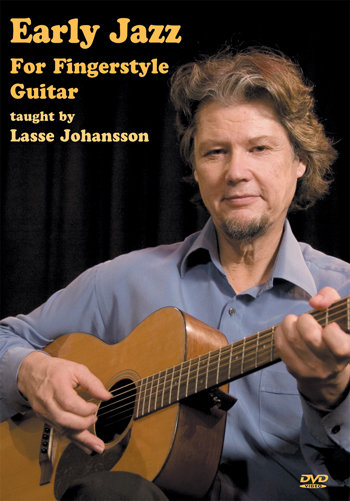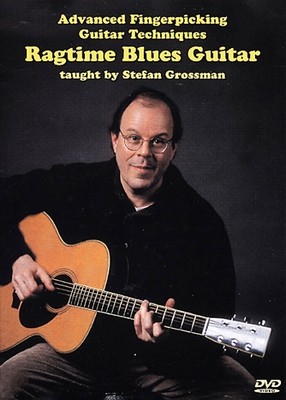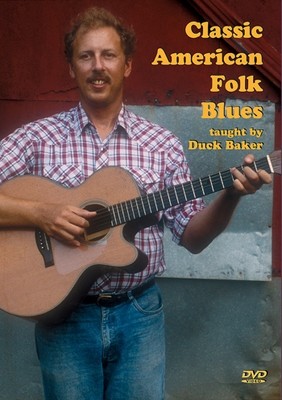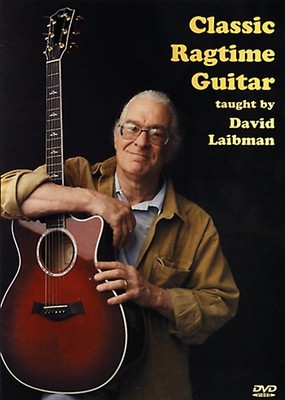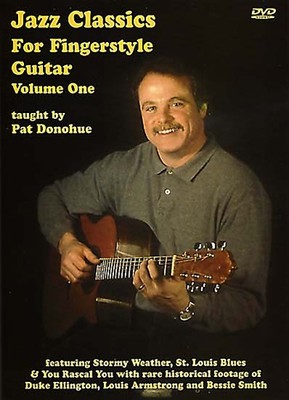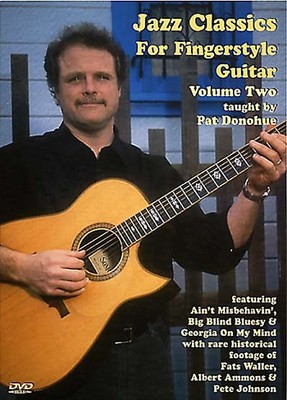
Early Jazz for Fingerstyle Guitar - taught by Lasse Johansson
The ragtime and early jazz music pioneers during the first decades of the last century didn't know that the sounds they created would echo in the music that people loved for years to come. They started an American music tradition that is alive to this day. I was born and raised in Sweden and I have always enjoyed the music from that era but being a guitarist, I never thought that playing back-up in a jazz band was for me. I'd rather do something with these songs so that they would fit my approach playing fingerstyle guitar.
Many of the early jazz songs and of course classical ragtime often is played as piano music, with a steady left hand playing bass notes and chords together with the right hand playing a syncopated melody on top. This style of playing is very similar to the alternating bass style on the guitar. So these tunes easily lend themselves to a fingerstyle arrangement.
With classical ragtime I approach arranging by transcribing the original piano sheet-music. The important thing is to find keys that suit the guitar and then decide what notes not to play since it is not technically possible to play all the notes in a piano score on the guitar. I like to play in keys that will give me the opportunity to use open strings in the bass while the melody moves up and down the neck. This is especially important since my aim is to make my arrangements not too difficult to play, so that the player can concentrate on the music instead of being too concerned with the technical aspects of his/her playing. The most important challenge though, is to make the tune sound like guitar music, not piano music played on the guitar.
I have not used sheet music when arranging early jazz tunes but rather I have listened to various band renditions on old records and picked up melody lines and bass runs from these performances. Once again finding the right key is a challenge. Early jazz played by brass bands used keys that those instruments favored, i.e. Eb or Bb, but these keys don't easily fit the fingerstyle guitar player.
I have focused on the melody and not so much on the improvisational aspect of early jazz. My playing of early jazz is in a set arrangement format, pretty much like with ragtime, but on stage I sometimes take an improvised fingerstyle chorus.
However I find it very hard, even when I play set arrangements, to do it exactly the same every time I play it. Therefore you should feel free to work with my arrangements and find ways to play them that suit you and your guitar. This DVD lesson will give you an insight in how I play seven early jazz compositions.
Titles include: Creole Belles - March & Two-Step, Dixie Jass Band One- Step, Russian Rag, Buddy Bolden Blues, Memphis Blues, Ain't Misbehavin' and Feelin' My Way
110 minutes • Level 3/4 • Detailed tab/music PDF file on the DVD
Review: Possibly the best transcriptions I've ever bought. These transcriptions are creative, challenging, fun to play, and the songs sound great. Best of all, the songs are really composed pieces -- they're not just a verse/chorus with variations. The level of complexity is comparable to classical music, but with the soul, sound and feel of popular music in solo guitar arrangements. His demeanor and playing are rather expressionless, but that's fine for teaching and gives you the opportunity to add in all the personality yourself. Highly recommended for the intermediate to advanced fingerstyle player. - Harlan A. Zimmerman/Amazon Customer Review
